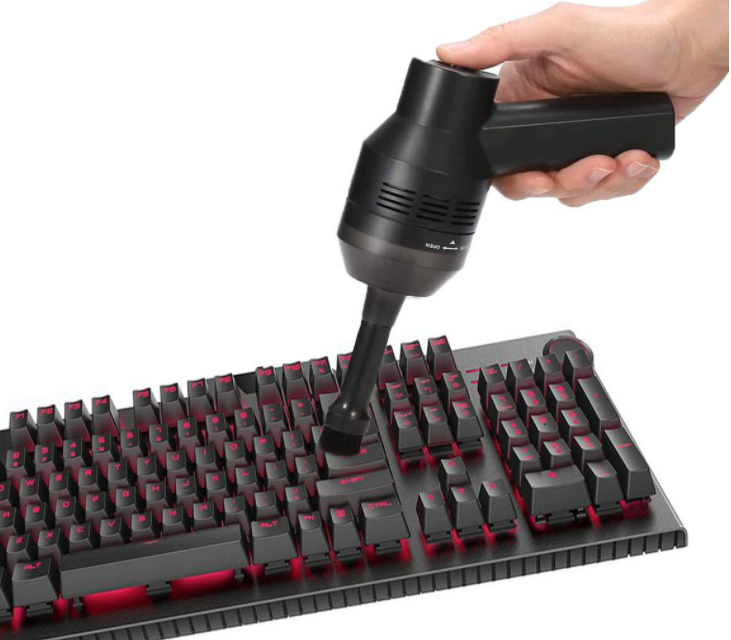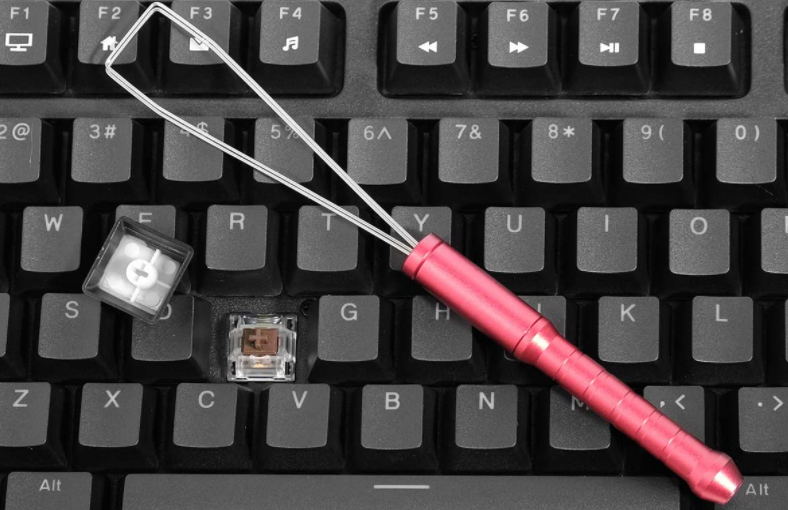Mechanical keyboards are the norm for any serious gamer. In order to maintain the quality and functionality of a mechanical keyboard, frequent light cleaning and thorough cleaning several times a year is recommended. Regular cleaning reduces dirt, oil and dust deposits and extends the lifespan of a keyboard. Before cleaning, check your keyboard manufacturer's website for more detailed cleaning instructions.
These are the best practices for cleaning a mechanical keyboard.
Easy cleaning

For regular light cleaning, you need a hand or stand-alone vacuum cleaner and a microfiber cloth or a pipe cleaner.
For decades, people have used compressed air or canned air to clean keyboards. However, this process can damage your keyboard or stay as dirty as it was before. The air from the can comes out very cold, which can lead to condensation on the keyboard and switches. The resulting condensation collects dust and bacteria and degrades the quality of your switches. Compressed air from the can does not remove dust or particles, it just displaces them. This is why a vacuum cleaner and microfiber cloth are your best choices for cleaning.
- First, disconnect your keyboard. Most of the connections are on the back of the card.
- This is for your safety and that of the board itself.
- Gently route your handheld vacuum cleaner or vacuum hose between the buttons, but be careful not to press too hard.
- Antistatic vacuums are good choices as they are designed to reduce potential damage to electronic components.
- While the hose attachment of a regular cylinder vacuum cleaner can do the job, using a handheld vacuum to remove dust is a quick and easy way to clean your keyboard.
- Clean the exposed areas of the keyboard shell with a slightly dampened microfiber cloth.
- Do not use a cloth that is too damp.
- You can also use a pipe cleaner to clean between keys by sliding the sides of the pipe cleaner through the gaps between the keys. However, pipe cleaners don't clean as thoroughly as a microfiber cloth.
- Immediately after drying, dry the board with a separate, dry microfiber cloth.
While some sources claim that a paper towel is acceptable, paper towels often leave residue, dust particles, and small scratches on the keyboard surface.
Thorough cleaning

To thoroughly clean your keyboard, you'll need a key puller, medium or large bowl, denture pads or dish soap, a towel, cotton swab or brush with stiff bristles, a vacuum cleaner, and two microfiber towels.
- Again, your first step is to disconnect your keyboard.
- After disconnecting the keyboard, use a key puller to remove all of the keys.
- Key extractors are inexpensive tools that allow you to remove keys safely and easily.
- Fill a medium or large container with warm water and denture tablets.
- Dish soap replaces prosthesis tablets.
- Throw the removed keys in the container and let them soak for about five to six hours.
- When they're done soaking, place the lids on a dry towel and let them dry naturally.
- Do not replace the keycaps until they are completely dry.
- In the meantime, turn your keyboard upside down on a trash can to easily shake off large particles.
- Thoroughly scrub the keyboard plate with a small bristle brush or cotton swab.
- This does not completely remove dust and particles, but it does loosen the dust enough to completely clean the plate in the next step.
- Use a handheld vacuum or the hose attachment on a full-size floor standing vacuum to clean the plate.
- Be careful not to press any exposed switches. An anti-static vacuum is the safest option for this step. Antistatic vacuums are a safe option because they are designed to reduce potential damage to electronic equipment.
- If any dust and dirt remain, gently wipe the plate with a slightly dampened microfiber cloth.
- Dry immediately with another microfiber cloth.
- Although you can use a paper towel, it is not recommended. Paper towels can scratch and leave particles.
- Once your keyboard board is clean and the caps are completely dry, put the caps back on your keyboard.
Handling Spills

While there isn't much anyone can do to spill a latte or beer on a keyboard, there is an emergency practice you can use if the liquid is something light like water or tea.
- Immediately unplug your keyboard.
- Take your keyboard and lay it on its side and upside down over a sink or trash can and gently shake it to remove any excess liquid that hasn't drained off.
- Remove all key caps and place them in a container filled with warm water containing denture tablets or dish soap. Let them soak for five to six hours.
- Let the keys air dry completely on a towel. Once the keys are completely dry, place them back on the board.
- Use a microfiber cloth to clean the keyboard.
- To be on the safe side, let the keyboard dry naturally for about two days.
It is important that the keyboard, especially components such as switches, are completely dry before attempting to reconnect them. If nothing was fried during the spill, your keyboard may still work.
Aucun commentaire:
Enregistrer un commentaire